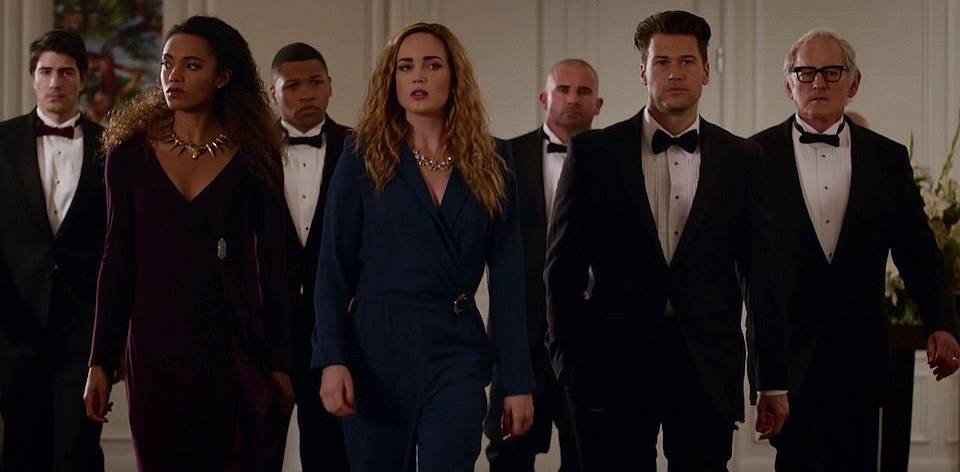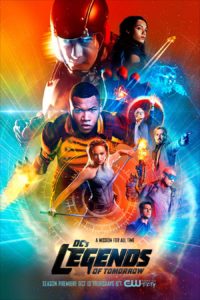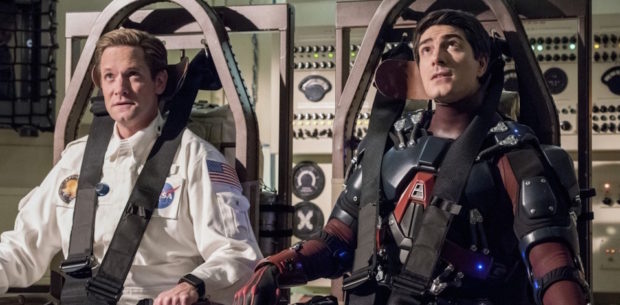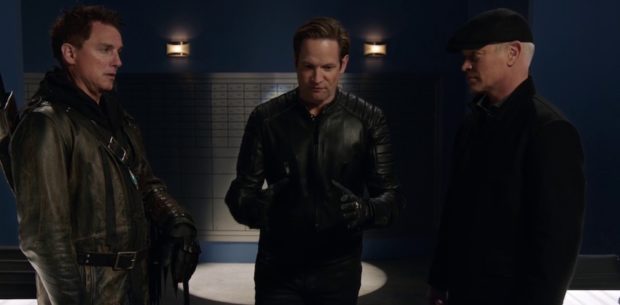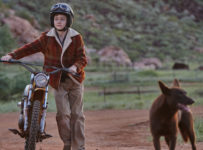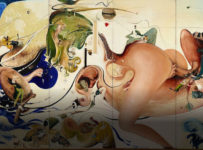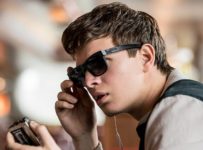Out of the four Greg Berlanti/”Arrowverse” shows, LEGENDS OF TOMORROW was the only one that stuck to its roots this year. Thrusting itself deep into the heart of the DC Universe, the first season’s cliffhanger left us with a dangling hint about the Justice Society of America. While the second season didn’t introduce them immediately, it paved the way quickly for a fun season that remembers one of the fundamentals of the show: it’s about time travel.
Avast ye! Some spoilers may be ahead.
LEGENDS OF TOMORROW has the advantage of being given a narrative focus, something that Arrow in particular has been in desperate want of for a few seasons. A season-long arc follows the disappearance of Rip Hunter (Arthur Darvill) and the scattering of his crew to various places in time. What initially feels like a pilot episode is in fact the setup for the search for the reality altering Spear of Destiny, allowing historian Nate Heywood (Nick Zano) to join the crew alongside JSA member Amaya Jiwe/Vixen (Maisie Richardson-Sellers), the grandmother of the character introduced in the Vixen animated series. With Sara Lance now effectively leading the Legends, the new team dynamic is one of squabbling comedy, interpersonal conflict and weekly costume changes in time. In other words, a spiritually faithful comic book adaptation.
Sitting diagonally opposite the team this season are the Legion of Doom, wisely consisting entirely of known entities. Malcolm Merlyn (John Barrowman), an out of time Damien Darhk (Neal McDonough) and Eobard Thorne/Reverse Flash (Matt Letscher) aim to collect the pieces of the spear for themselves. Their interactions are pitch perfect, rarely agreeing on anything (the undoing of all the great supervillains), and all three camp it up to just the right levels. While the non-powered Merlyn and Darhk may seem like lightweights next to Thorne, all of that is addressed and each has their day in the sun.
The first season was somewhat hit-and-miss with its episodic approach, or at worst getting stuck in one time period for weeks at a time. A more targeted approach to times and scenarios reaps rewards this year. Trips to 17th-century feudal Japan (“Shogun”), the prohibition era (“The Chicago Way”) and the Revolutionary War (“Turncoat”) war are familiar time travel settings, but most of these find a way of tying into the overarching story. Then there’s the outside-the-box episodes, including the film-literate “Raiders of the Lost Art,” where the team must stop a time aberration around George Lucas (yes, the George Lucas) so he will produce the famous films that inspire Ray and Nate to go into science and archaeology respectively. A split period “Camelot/3000” represents a nice nod to the Mike W. Barr/Brian Bollard comic series while allowing in fantasy elements, and “Moonshot” delivers on the sci-fi aspect of the show by actually going to the moon during the Apollo 13 mission. The Legends also had the honour of concluding the four-way crossover with Arrow, The Flash and Supergirl in “Invasion!”
Each of the characters continues to grow, with Sara settling into the leadership role comfortably. Martin (Victor Garber) is given a vastly expanded story with the introduction of his own aberration. The most satisfying arc is Mick’s (Dominic Purcell), as he struggles not only with the death of Leonard Snart (Wentworth Miller) in the first season, but his own growth into a fully-fledged hero. The newcomers to the series might get saddled with a budding romance, but their superpowers give both emotional and special effects weight to the show.
The finale, effectively a three-part story that begins with “Fellowship of the Spear” and ends with season-closer “Aruba,” is a terrific example of what can be done with big stories on the small screen and leaves us with a hell of a cliffhanger for the year. Promising a massively complex operation at the start of Season 3, and the promise of new characters joining the team, it has easily become one of the shows in the Arrowverse that is easy to look forward to.
[stextbox id=”grey” bgcolor=”F2F2F2″ mleft=”5″ mright=”5″ image=”null”]2016-2017 | US | Executive Producers: Chris Fedak, Sarah Schechter, Phil Klemmer, Andrew Kreisberg, Marc Guggenheim, Greg Berlanti | Cast: Caty Lotz, Victor Gerber, Brandon Routh, Nick Zano, Maisie Richardson-Sellers, Dominic Purcell, Arthur Darvill, Amy Pemberton | Distributor: CW (US), FOX8 (Australia) | Episodes: 18 [/stextbox]

